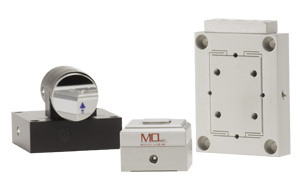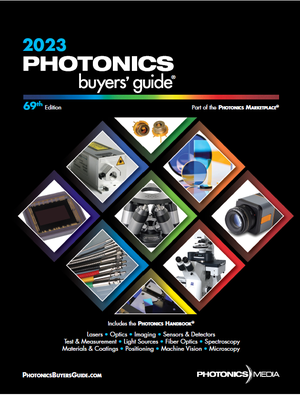
< More EuroPhotonics NewsletterSubscribe to our E-NewslettersEuroPhotonics Newsletter: Pinned Photodiode Structures, Brain Imaging, and more… (9/20/2023) (9/20/2023)
EuroPhotonics Newsletter: Pinned Photodiode Structures, Brain Imaging, and more… (9/20/2023)
Quarterly newsletter from Photonics Media highlighting the latest photonics news, features, and products from Europe.
| If you are having problems seeing this newsletter, please click here to view |

|
Quarterly newsletter from Photonics Media highlighting the latest photonics news, features, and products from Europe. Manage your Photonics Media membership at Photonics.com/subscribe.
|
Imec Applies Pinned Photodiode Structure to Thin-Film SWIR Imager
Engineers at imec have integrated a pinned photodiode (PPD) structure in thin-film image sensors. According to the researchers, the addition of a pinned-photogate and a transfer gate into the thin-film image sensor architecture exploits the superior absorption qualities of thin-film imagers — beyond 1 µm.
|
|
|
|
|
Brain Imaging, Image Reconstruction Combine in a Single Workflow
Scientists at Institute of Science and Technology Austria (ISTA) have developed an imaging technology to analyze live brain tissue at a scope and spatial resolution that, according to the researchers, was not previously possible. The technology, called Live Information Optimized Nanoscopy Enabling Saturated Segmentation (LIONESS), allows dense, 4D, nanoscale reconstruction of living brain tissue.
|
|
|
|
|
Lens Fabrication Method Clears Way for Portable Gas Sensor's Preferred Light Source
Researchers from the University of Toulouse have developed a method to fabricate a microlens that could enable more effective portable gas sensing technologies. The researchers used two-photon-polymerization 3D printing to fabricate a microlens that could enable vertical cavity surface emitting lasers (VCSELs) for use in ammonia gas detection. The work demonstrates the potential of two-photon polymerization as a fast and accurate technique for VCSEL collimation at a post-mounting stage. In addition, the researchers said that it paves the way toward the development of optimized laser chips directly integrable in portable optical sensing systems.
|
|
|
|
|
 Tools for the Nanoscale
Tools for the Nanoscale
Mad City Labs Inc.
Mad City Labs provides tools for the nanoscale for applications in photonics, microscopy and physics applications. Our portfolio includes closed loop piezo nanopositioners, micropositioners, atomic force microscopes (AFM/SNOM) and single molecule microscopes. European Office: [email protected] or +41 (0)44 803 98 18
|
|
|
 The 2023 Photonics Buyers’ Guide
The 2023 Photonics Buyers’ Guide
Photonics Media
The 2023 edition lists over 4000 companies under 1600 product categories. It also includes 30 articles from the Photonics Handbook. Use coupon code SP23 for a special offer!
|
|
|
|
|
| |
|
Researchers from the Institute of Optics of CSIC and the Institute of Photonic Sciences (ICFO, Spain) have developed and demonstrated an approach to generating single photons along well-defined directions. The advancement avoids the need for sophisticated 2D or 3D structures to achieve highly directional single-photon emission.
|
|
An international team of researchers has observed growth effects of tin coatings on silicon nanometer-structured surfaces, reportedly for the first time. From their observations, the researchers coordinated by the Leibniz Institute of Photonic Technology (Leibniz IPHT) showed how the chemical composition of deposited thin films can be precisely controlled and monitored in the future.
|
|
Techniques for micromanipulation support nanostructure assembly, particle trapping, and the spatiotemporal analysis of cell organization. Introducing optically induced thermoviscous flows can be used to optically move the cytoplasm in cells and developing embryos, for example, and can be used in intracellular rheology. Scientists at Karlsruhe Institute of Technology have now developed nearly isothermal scan sequences that exploit symmetry relations during laser scanning to disentangle laser heating and flow induction. The researchers’ scan sequences use dynamic photothermal stimuli and spatiotemporal symmetry relations of scanning bridging up to three distinct timescales.
|
|
|
